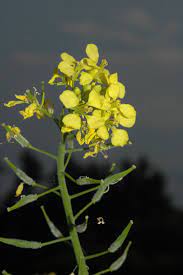Brassica hirta, commonly known as yellow mustard, is a plant with many uses in agriculture. It can be grown as a cover crop, forage crop, or as a source of oil and spices. This article will explore the different applications of yellow mustard in agriculture and its potential benefits for sustainable farming practices.
Yellow mustard is a versatile crop that can be grown in a variety of environments, from cool and moist to hot and dry. As a cover crop, it can help prevent soil erosion and suppress weeds, while improving soil fertility through nitrogen fixation. Yellow mustard is also used as a forage crop for livestock, providing a nutritious feed source. In addition, it is a source of oil and spices that are used in cooking and food production.
According to a study published in the Journal of Agricultural and Food Chemistry, yellow mustard seeds contain high levels of antioxidants, which may have potential health benefits when consumed. The study also found that the oil extracted from yellow mustard seeds had antimicrobial properties, which could have applications in food preservation.
In conclusion, yellow mustard is a valuable crop for sustainable agriculture. Its versatility and multiple uses make it an attractive option for farmers and agricultural practitioners. Additionally, its potential health benefits and antimicrobial properties provide further incentive for its cultivation.
#BrassicaHirta #YellowMustard #SustainableAgriculture #CoverCrop #ForageCrop #AntimicrobialProperties #FoodPreservation #HealthBenefits












